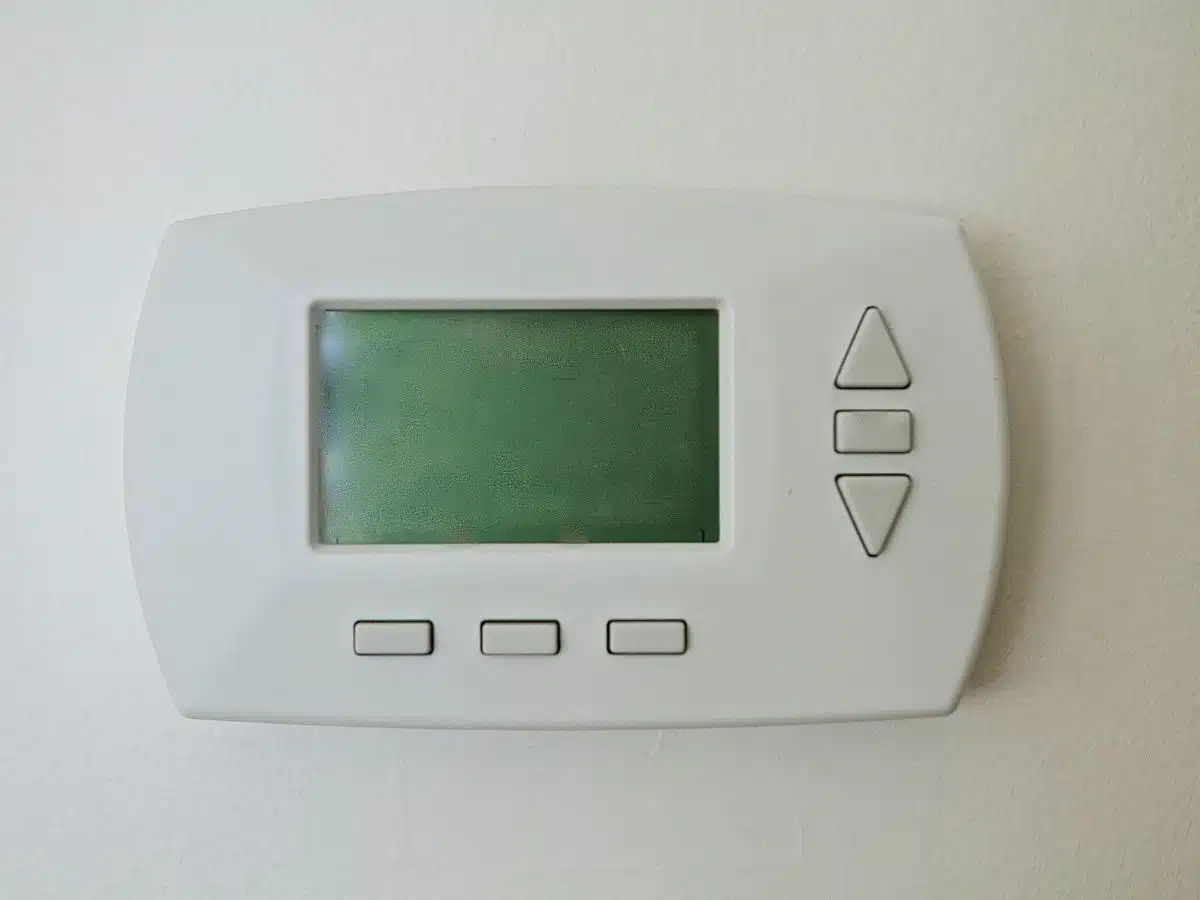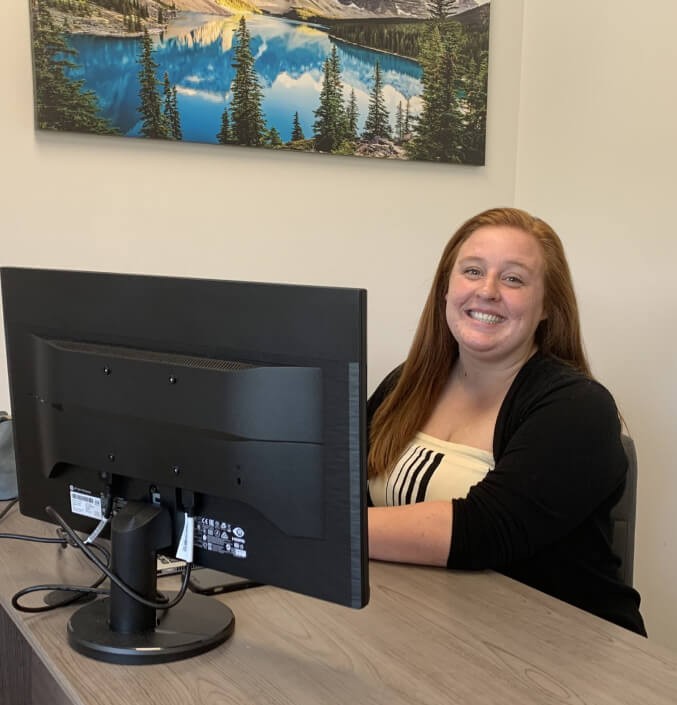Finding out that your thermostat doesn’t have power can be really annoying. This small but important device is crucial for keeping your home comfy. When it stops working, it can mess up your heating and cooling, making your home too hot or too cold and causing system problems.
Thankfully, Anderson Air is here to help you figure out and fix your thermostat issue. With this information, you can quickly spot the problem and do the necessary troubleshooting to keep your home cozy and your heating, ventilation, and air conditioning system working well.
Understanding your thermostat’s role in home heating and cooling
The thermostat is the command center of your HVAC (Heating, Ventilation, and Air Conditioning) system. It regulates the temperature by communicating with your heating and cooling systems, ensuring your home remains comfortable year-round.
When the thermostat is without power, it can no longer send signals to your HVAC system, leading to discomfort and potential system issues. Without this critical communication, your heating, ventilation, and air conditioning system may maintain the desired temperature, causing your home to become too hot or cold.
Signs indicating no power to the thermostat
- The display is blank or unresponsive.
- The HVAC system isn’t responding to thermostat settings.
- The thermostat shows an error message.
What causes no power to the thermostat?
If your thermostat loses power, it can be annoying, especially when controlling your home’s temperature. Knowing the reason why this happens can help you fix it quickly. Here are some common reasons why your thermostat might not get power and what you can do about it:
Batteries need replacement
A common reason why thermostats lose power is dead batteries. Many temperature regulators, especially older models, rely on batteries. You can tell the batteries are low if the display is blank or the thermostat works on and off.
How to Fix:
Replace the batteries following the manufacturer’s instructions. Remove the thermostat from its place. Insert new batteries the right way. Put it back on.
Tripped circuit breaker
Electrical problems like power spikes, excessive voltage, too much load on circuits, or circuit shorts can make the circuit breaker switch off, cutting off power to your thermostat. This safety feature protects your HVAC system from harm and lowers the chance of fires. However, it also means your temperature regulator will only work once you reset the breaker and fix the issue.
How to Fix:
- Locate your home’s electrical panel and check for tripped breakers. If you find one, reset it by flipping it off and then on.
Blown fuse
Older heating, ventilation, and air conditioning systems might have fuses that can blow out due to too much power or electrical problems, which can prevent the thermostat from getting power.
How to Fix:
- Check the fuse in the main panel or a nearby fuse box and replace any blown fuses with the same rating.
The furnace door safety switch
An incorrectly closed furnace door can cut off power to the temperature regulator. Most furnaces have a safety switch that cuts off power if the door is not closed properly.
How to Fix:
- Ensure the furnace door is securely closed and repositioned until the switch engages appropriately.
Loose wiring or terminal screws
Faulty or loose wiring can disrupt power to the temperature regulator, emphasizing the importance of regular HVAC maintenance checks.
How to Fix:
- Turn off the power to the HVAC system, remove the thermostat cover, inspect and tighten any loose wiring and terminal screws, then replace the cover and restore power.
Compatibility between HVAC systems and thermostats
Incompatibility between your HVAC system and thermostat can cause operational issues, including power loss. Ensure your temperature regulator is designed to work with your HVAC system, especially if it’s a smart thermostat.
How to Fix:
- Read your thermostat’s manual or contact a professional to verify compatibility before making any adjustments or replacements.
Damaged thermostats
Over time, physical damage or wear and tear can cause a temperature regulator to malfunction or lose power.
How to Fix:
- Inspect the temperature regulator for any visible damage. It may need to be repaired or replaced to restore proper functionality if it appears damaged.
When to call a professional to fix no power to your thermostat
While many temperature regulator issues can be resolved with simple fixes, DIY electrical work can be hazardous, especially when dealing with complex systems like HVAC systems.
This is where Anderson Air comes in. Entrusting us with your HVAC maintenance and repairs ensures your home’s heating and cooling systems are in good hands.
Here are the main situations when you should call a professional to fix no power to the thermostat:
- Your circuit breaker continues to trip.
- You smell burning or see smoke coming from your thermostat.
- Your temperature regulator is not responding or behaving erratically.
- Your heating, ventilation, and air conditioning system is not turning on at all.
- You notice flickering lights or dimming when your HVAC system is running.
- Your wiring problems are complex to fix.
Tips to prevent no power to the thermostat
Ensuring that your temperature regulator remains functional and receives continuous power is crucial for maintaining the comfort and efficiency of your HVAC system. Here are several tips to help you avoid common issues that might disrupt the power supply to your thermostat.
- Have your heating, ventilation, and air conditioning system regularly inspected and maintained by a professional technician to catch any potential electrical issues early on.
- Avoid DIY or Do-it-yourself installations or repairs on your thermostat or HVAC system.
- Contact a professional technician for assistance if you notice any unusual behavior from your temperature regulator or HVAC system, such as flickering lights or erratic readings.
- Consider investing in a smart thermostat to help regulate your HVAC system’s energy usage and prevent potential electrical issues.
- Keeping the area around your thermostat free from dust or debris can also help prevent issues.
- If there is a power outage, turn off your heating, ventilation, and air conditioning system to avoid any potential electrical surges when the power comes back on.
- Regularly check and replace batteries in battery-operated temperature regulators to prevent malfunctions or safety hazards.
No power to your thermostat? Contact Anderson Air for expert HVAC solutions
A functioning thermostat is crucial for maintaining home comfort. Understanding the common causes of power loss and how to address them can save you time and frustration. While some issues can be easily fixed with DIY solutions, it’s important to feel free to call in professional help for more complex problems.
Don’t let thermostat issues compromise your home’s comfort. Trust the experienced professionals at Anderson Air to handle thermostat installation, repair, and all your HVAC needs. Contact us today for reliable service, peace of mind, and a comfortable home environment.




